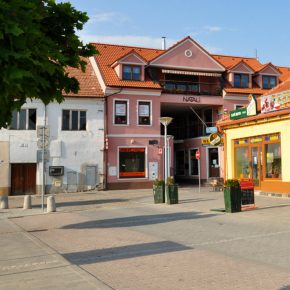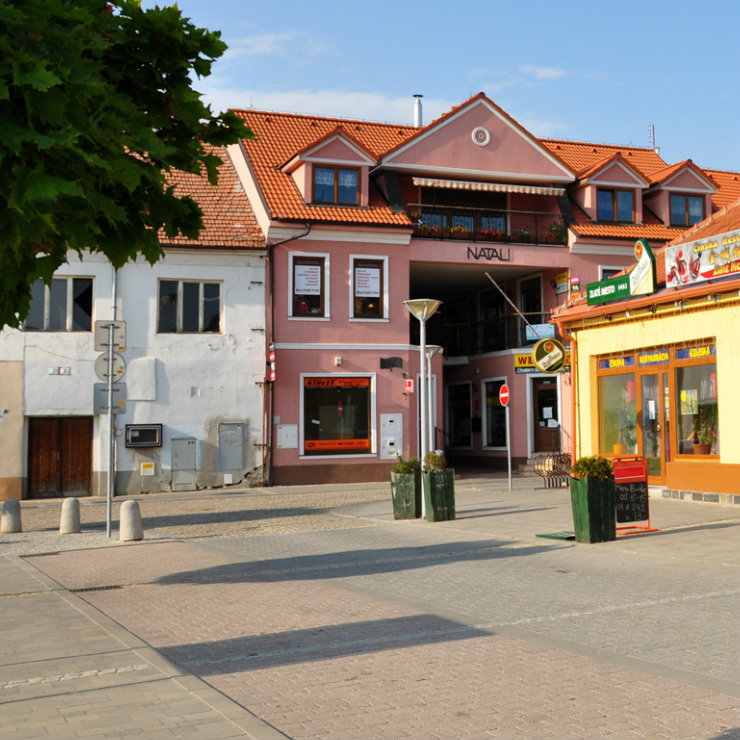Tydzień w gospodarce
Category: Raporty

Nové Mesto nad Váhom, Slovakia (János Korom Dr., CC BY-SA)
“We changed the approach,” Finance Minister Peter Kažimír told Slovak Television, as reported by the Slovak Spectator. Kažimír added that this tax should continue to be only revenue for towns and villages and the government wants to agree upon a gradual change in taxation of real estate, so that it also reflects the value of the property.
In Slovakia, municipalities decide on individual property tax rates based on the size of the real estate. Apart from being a source of revenue for municipalities, localities can also utilize property taxes to affect their future development either in terms of population growth or investments into businesses.
“It is their estimate of how much citizens and entrepreneurs pay,” said Peter Kremský from the Business Alliance of Slovakia (PAS). “It can also be a tool for supporting business activity,” he added.
The government already wanted to increase taxes on luxury real estate in 2012 when it planned to introduce a special flat rate for luxury villas. However, after it realized that it would be too difficult to filter luxury real estate, it abandoned the idea and left the decision on property tax rates to municipalities.
This year brings higher real estate taxes to Slovakia, compared with previous years. They increased by 2.33 per cent on average, which is the highest increase since 2013, based on an analysis by PAS.
So far, the most dramatic increase of real estate taxes took place between the years 2004 and 2005, when municipalities could independently decide on the taxes for the first time. The rate of increase declined significantly over the following years.
Kremský sees especially the tax hike in Bratislava and regions with high investment and development behind the increase, as most Slovak towns have not increased their real estate taxes. “New industry and services bring greater demands on transport, infrastructure or other related activities that are often provided by municipalities,” explained Kremský.
The Slovak capital increased the real estate tax on apartments and houses by 30 per cent and on agricultural and other constructions by 50 per cent, while taxes rose especially for commercial space in blocks of apartments – in the Old Town they almost tripled and in other boroughs they rose by as much as 160 per cent.
However, it is the town of Nové Mesto nad Váhom which can boast the highest increase in real estate taxes, when businesses will pay as much as 322 per cent more than for ordinary, non-residential premises such as garages.
On average, tax rates on commercial space for doing business in blocks of apartments increased the most – by as much as 9 per cent.
Only three towns increased real estate taxes on premises for doing business – Nové Mesto nad Váhom, Martin and Medzev. Nevertheless, the tax remains the lowest in the latter – EUR666 for per 1,000 square meters of commercial space on a plot of 1,500 square meters.
Businesses will pay the highest taxes for premises for doing business in Púchov – as much as EUR6,449 for the same real estate. In Bratislava’s Old Town it will be roughly EUR5,000. Among the remaining boroughs of Bratislava and in Košice it will be roughly EUR4,100.
Kremský was surprised by the increase in towns that suffer from high unemployment. He believes that low real estate taxes can attract potential investors and improve employment in some areas. “It seems that the towns are not using the tax rate as stimuli for the arrival of new investors,” he said. As an example he listed Zvolen, Rožňava, Veľký Krtíš, Spišská Nová Ves and Rimavská Sobota, which rather discourage investors. “The same is the situation in Púchov or Žiar nad Hronom, where the town wants to rely on the big industries but at the same time it slows down economic development,” he added.
The system of taxation based solely on square meters of property was criticized by the International Monetary Fund in 2012, as it did not take into consideration price differences among cities and regions. In May 2016, the Finance Ministry introduced its plan to create, in cooperation with the Association of the Towns and Villages in Slovakia (ZMOS), technical preconditions for a change in the system of taxation that would also take into consideration the market value of the property. However, no significant changes in the mechanism of taxation are planned for 2017.
“Proposals and changes in taxation are exclusively in the competence of the Ministry of Finance,” said ZMOS executive chairman Jozef Turčány. “Allocating the tax according to the square area of the estate is not fair as it does not reflect the value of the property as such, taking into consideration its utilization,” Alica Orda Oravcová from the Slovak Chamber of Tax Advisors told the Slovak Spectator.
On the other hand, many people, mainly from older generations, are rich in property ownership but poor in terms of current income. “A high tax on real estate in which they live can bring them into misery in their own residence,” Radovan Ďurana, an analyst at the INESS think-tank, told The Slovak Spectator. Experts claim that the new system based on the market value of the property will put certain groups of residents at a disadvantage. Orda Oravcová explained that the tax must be fair and explicitly stated, so that taxpayers know their obligation.
The National Agency of Estate Agents developed price maps that take into consideration the square area, balconies and loggias, number of floors, condition and even material used for the construction. However, they are not always reliable.
Pavel Škriniar from the Finančná Hitparáda website also points out that the maps contain only general information about the prices in the locality but not about the particular value of an estate. “Many people obtained their flats during socialism and their lifestyle has not changed since,” Škriniar said, pointing out that according to the development on the estate market their flats will now fall into the luxury category. “They will have to pay additional tax on this luxury.” Also Turčány from ZMOS confirmed that the difference between the value of the estate and the income of the owner can be a problem.

